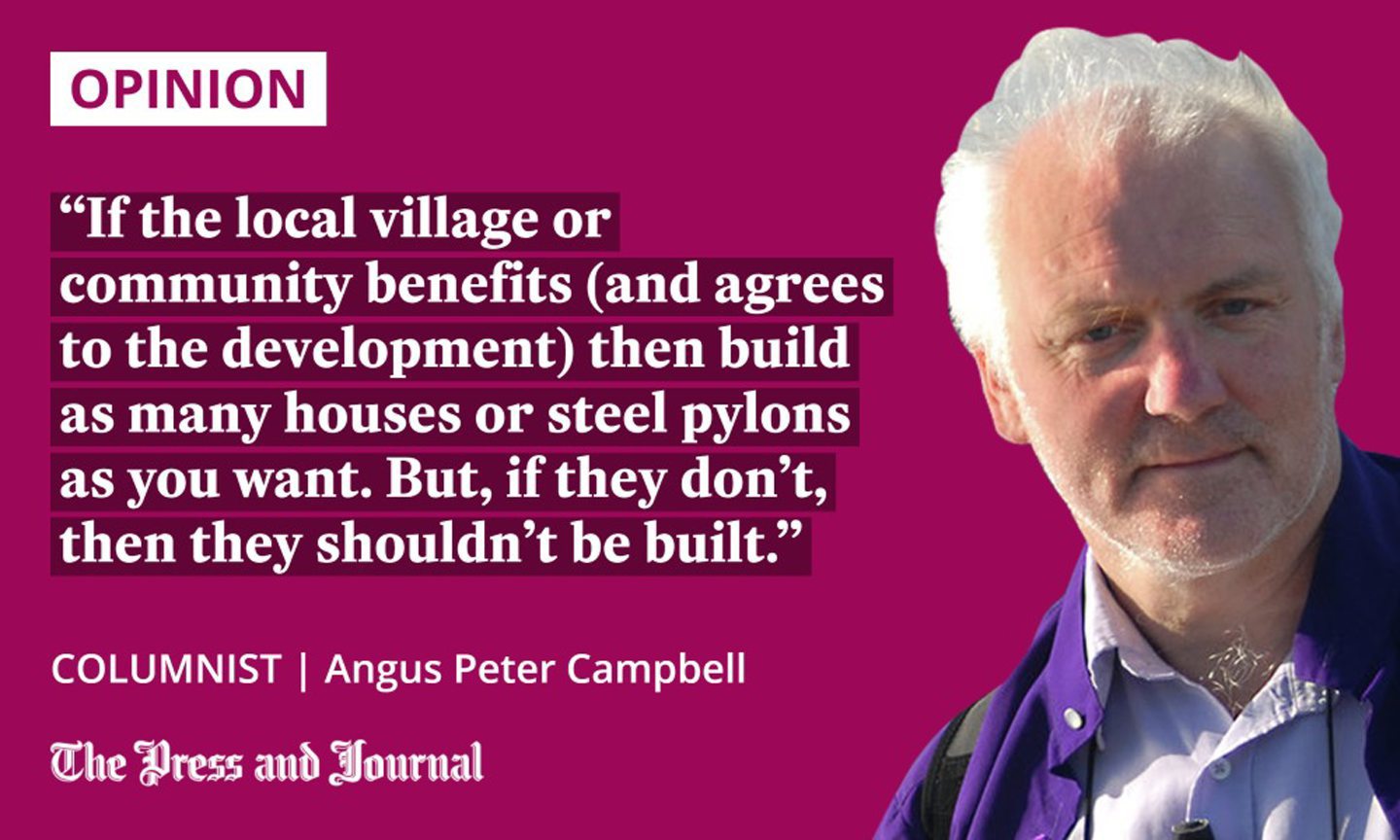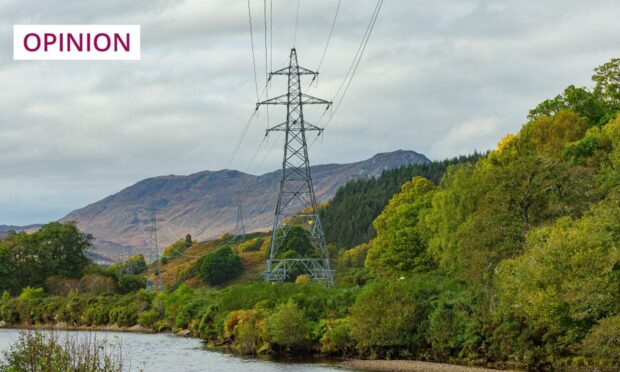Scottish and Southern Electricity Networks (SSEN) are planning on building steel pylons through Glen Arroch and Kylerhea in the south end of Skye and – rightly – local residents are objecting on the grounds that it will damage one of the most beautiful glens in Scotland.
It seems a familiar tale, though we ought not to get too familiar with it. We all understand that developments need to happen – piers and roads and schools and hospitals and houses and water and communication networks need to be built, because we all rely on them at one time or the other and, to have sustainable communities, these services are essential.
It’s not just a case of NIMBY – not in my back yard. The Gàidhealtachd has tolerated more than its fair share of ugly developments over the years, like much else of urban Scotland. Awfully bonny parts of Inverness were bulldozed to the ground in the 1960s and 1970s to make way for concrete office blocks in the centre of town which are now, at last, being reimagined.
I am a pre-electric child and well remember the marvel when men from the mainland arrived in Uist and began erecting telegraph poles all the way south. They frizzled in a new world and, soon enough, Dixon of Dock Green replaced some of the fine old Fingallian stories. Like the Pickwick, the Owl and the Waverley pen, they came as a boon and a blessing to men.

I liked the telegraph poles because the wind made a special hissing noise as it swept through them on dark nights. And you could make your way home by them in the dark, navigating southwards when the moon shone on the lovely porcelain insulators. And we could climb them, right up to the top, and see forever – even as far as Benbecula on a good, clear day.
I think the issue has always been about ownership and power rather than the developments themselves. If the local village or community benefits (and agrees to the development) then build as many houses or steel pylons as you want. But, if they don’t, then they shouldn’t be built.
That’s not because the local community is any wiser or more visionary than any building company or electrical corporation, but simply because their concerns are more basic and rooted, informed by their lived-in knowledge of the local area and what it can and should bear.
Default to resist development isn’t necessarily best
I’ve been around long enough to know that nine times out of 10, the default position for all of us is to resist any development. Any change. Och, why build a proper road there when that cart-track has done for the past 200 years?
Och and och again, we don’t need any new houses (or any new people) here because we’re just fine as we are. Nice and quiet and no one bothering us. Though the local school closed down years ago because there are no young families, and the local shop and local church went the same way…
I exaggerate, of course, because, meantime, there are also plenty folk and plenty villages that welcome growth and life with open arms. The marvellous developments on the Isle of Eigg for example and, more recently, the community-based developments on Colonsay and Ulva and elsewhere. Just because the porridge was always made with salt and eaten plain, with milk if you were lucky, doesn’t mean it always has to be made that way.
There’s mair than ane way tae skin a coo
The central issue is ownership. If any development is being done by some external body for mere profit then it (almost automatically) ought to be questioned, if not resisted. It’s very much like the wind farm issues: the best developments have been those built and owned and controlled by the local communities.
Again, that too is a real live issue currently in Skye, where there are growing demands for a public inquiry into the erection of 200-metre high industrial windfarm turbines on the island. The local people campaigning against these have a very informative website which really is worth reading.
As I write, the community around Kylerhea at the south end of Skye is running a petition against the siting of the pylons. Kylerhea is where the famous ferry from Glenelg runs to Skye – the last ferry that connects the island to the mainland. You can sign the petition here.
SSEN argue that the pylons through Skye are necessary to maintain the security of supply to homes and businesses along its route, as well as to the Western Isles. Aye, so they may be, but as the Fyvie fairmer said: “There’s mair than ane way tae skin a coo.”
The pylons could run the less damaging, existing cable route, or be built underground. Ah, but that costs, say the companies, because the financial costs are too often the only costs that matter.
Angus Peter Campbell is an award-winning writer and actor from Uist


